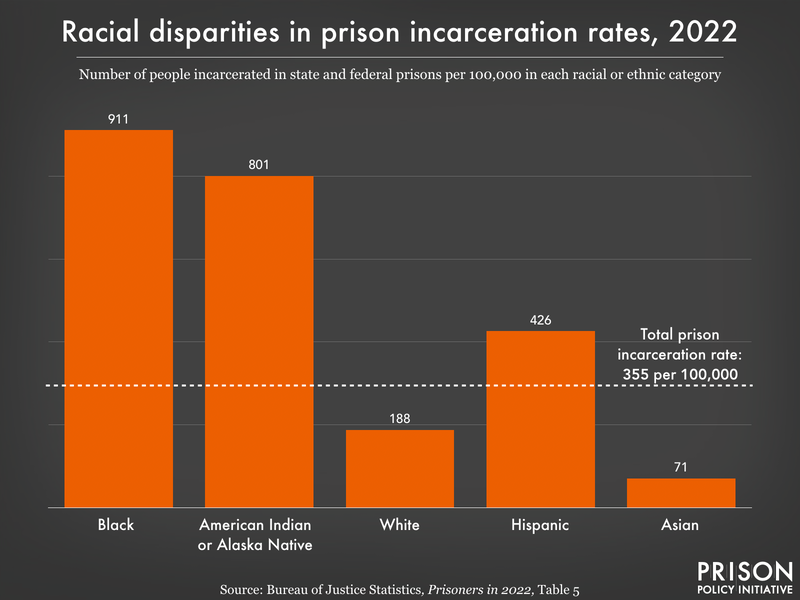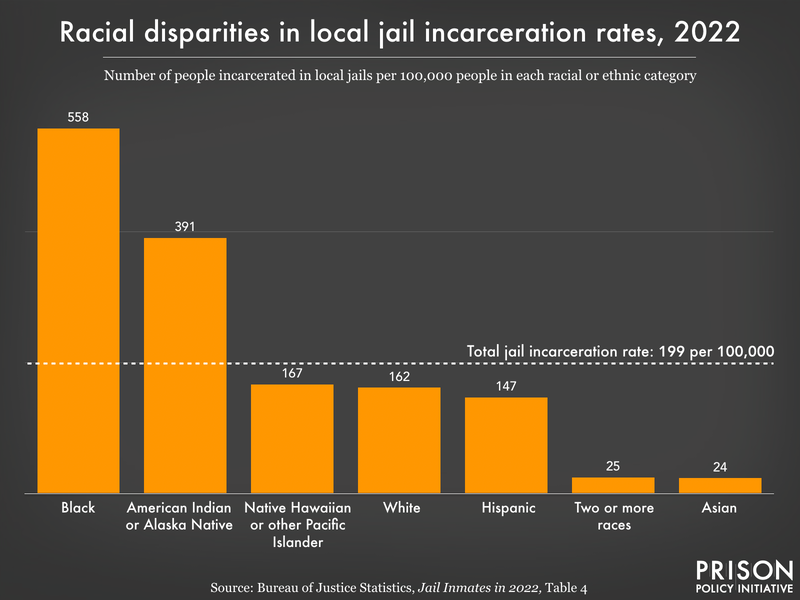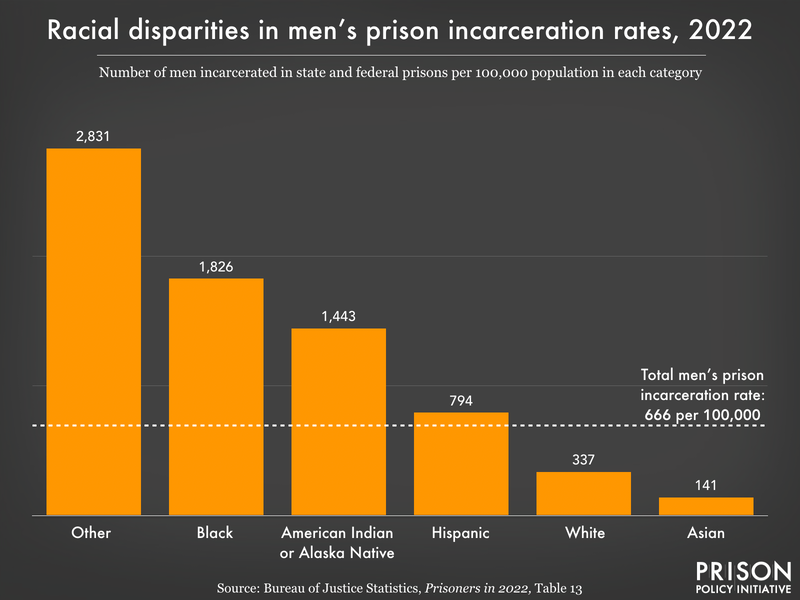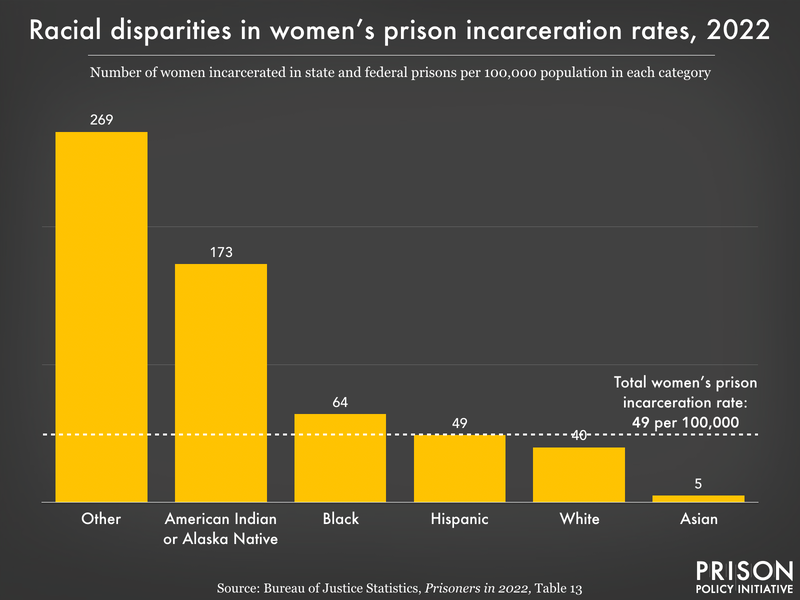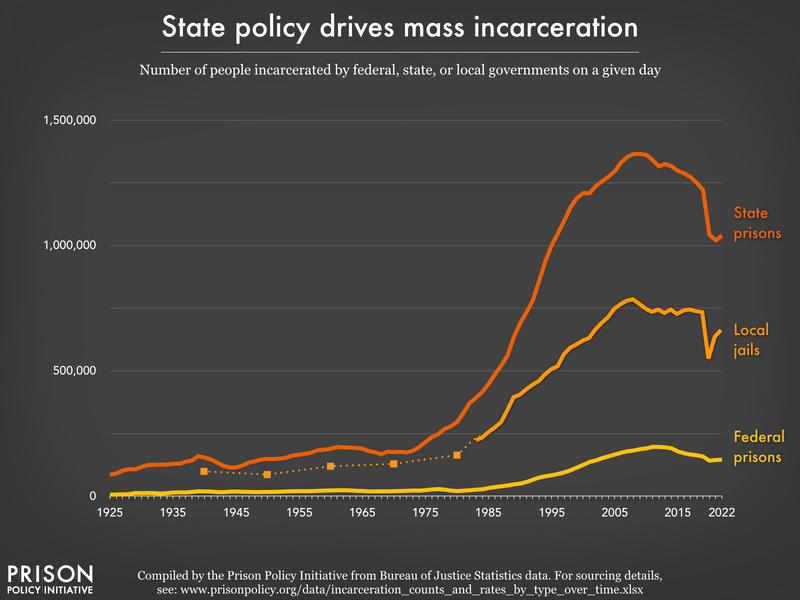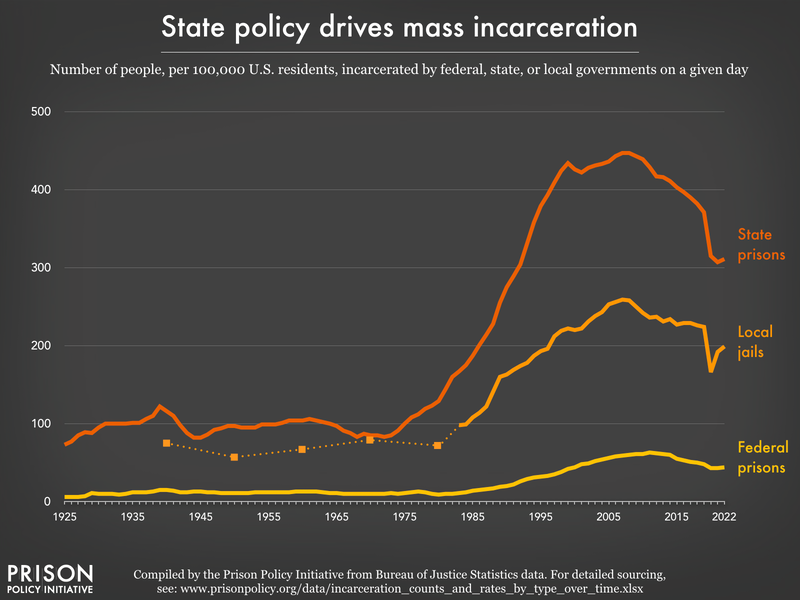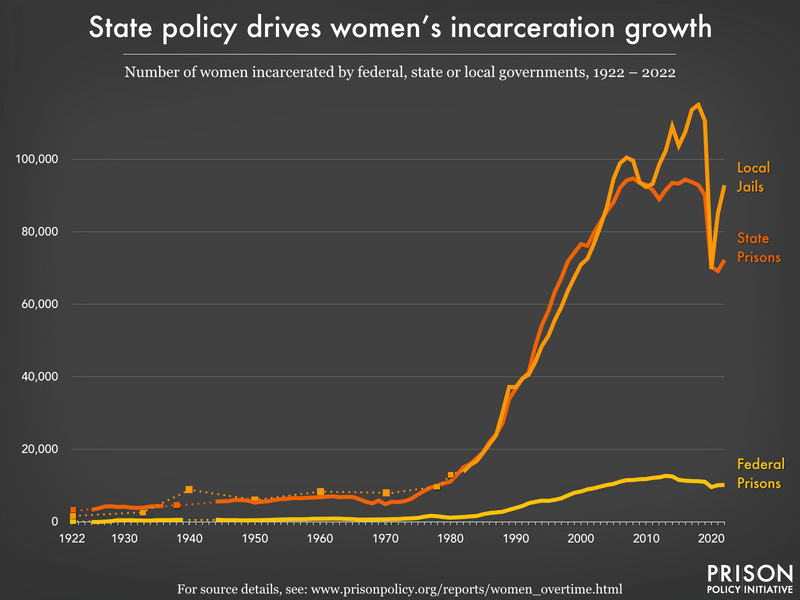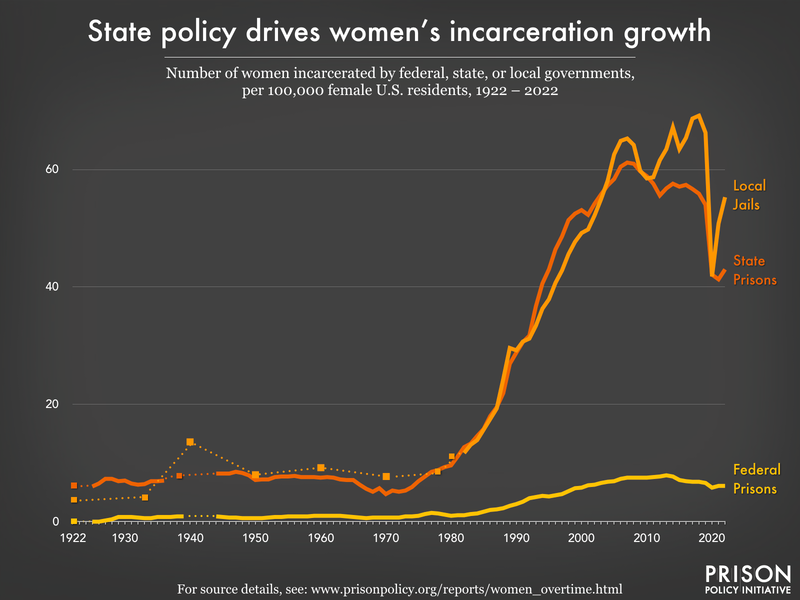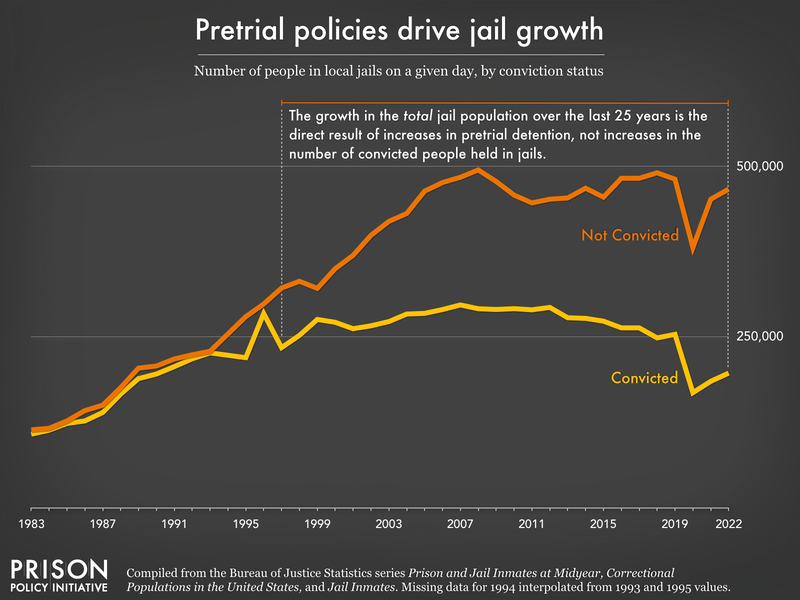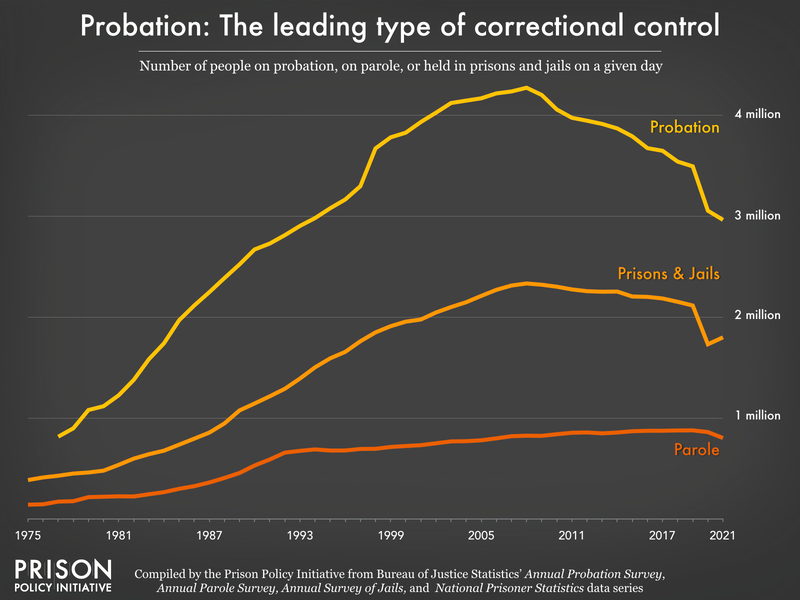Updated charts show the magnitude of prison and jail racial disparities, pretrial populations, correctional control, and more
Updated data visualizations illustrate the scale of — and disparities within — mass incarceration.
by Leah Wang, April 1, 2024
At the Prison Policy Initiative, we’re known for clear, powerful visuals communicating the harms of mass criminalization. We balance context and simplicity to create visualizations that are useful beyond our reports and briefings.
We usually only update our data visualizations about mass incarceration as part of a new report or briefing. However, some graphs are so powerful that they warrant special treatment. In recent months, new data have been released about racial disparities, probation, incarceration, and jail detention. So we’ve updated a few of our most comprehensive and compelling charts to equip advocates, lawmakers, and journalists with the latest information available.
Racial disparities in incarceration
Since 2020, the Bureau of Justice Statistics has reported on more racial and ethnic categories in jail populations, as well as prison populations by sex. These new statistics underscore the ongoing racial injustice of prisons, where the national incarceration rate of Black people is six times the rate of white people and more than twice the rate in every single state.
A few months ago, we released an updated dataset with incarceration rates by race (covering 2021 for prisons and 2019 for jails) for every state and the District of Columbia. Our Racial Justice page also contains reports, briefings, research, and visualizations focused on the intersection of race and mass incarceration.
State policies (still) drive mass incarceration
State-level policies are responsible for incarcerating the vast majority of people in the United States. Recent data show many state prison populations have nearly returned to, or even surpassed, their pre-pandemic levels—highlighting a serious need for policies that will permanently reduce prison populations. (State lawmakers and advocates should check out the high-impact policy ideas we compile every year for our Winnable Battles series.)
The long arms of mass incarceration and supervision
In addition to the 1.2 million people warehoused in prisons, over 650,000 languish in local jails, often as a result of prohibitively high cash bail. There, they may spend weeks, months, or even years in infamously terrible conditions before a decision is reached in their case. As you can see in the first chart below, pretrial detention has driven jail population growth over the past 25 years; at this point, more than two out of three people in jail are legally presumed innocent.
Beyond the 1.9 million people behind bars, millions more are subjected to the greater “mass punishment” system of parole and probation supervision, living in the community but under restrictive and counterproductive rules. More than 2.9 million people on probation and 800,000 people released from prison on parole must live with the constant threat of being jailed over a minor or even noncriminal “technical” violation. And although these populations have decreased somewhat since 2020, they’re still too high and are already rebounding as pandemic-related delays in the courts subside.
Visit our Jails and Bail and Probation and Parole pages for more research on these institutions’ roles in the carceral system.
One more thing: We’ve also updated the underlying data behind some of these charts in our data toolbox to empower advocates, lawmakers, and journalists to illustrate the consequences of mass incarceration in their communities. If you’re using this data in your work, let us know about it.
